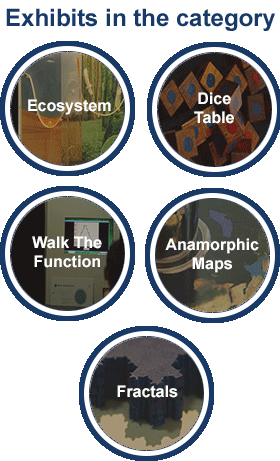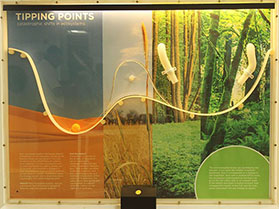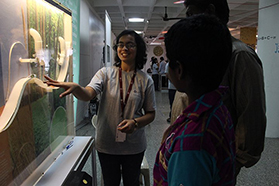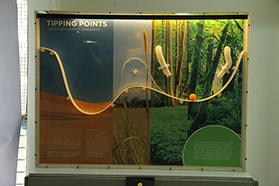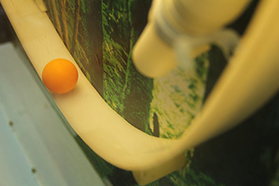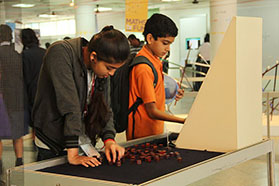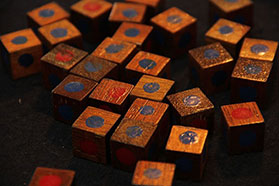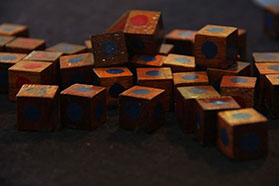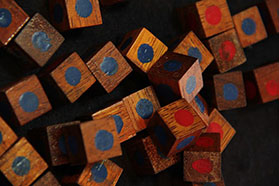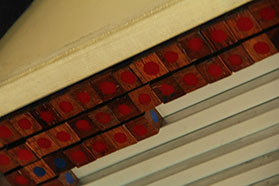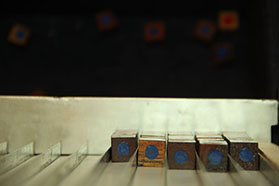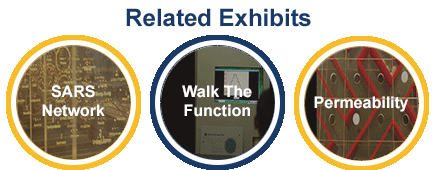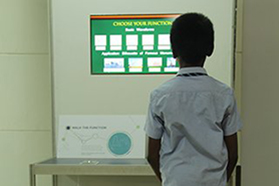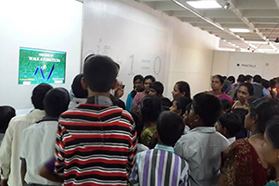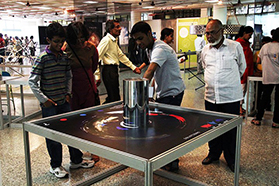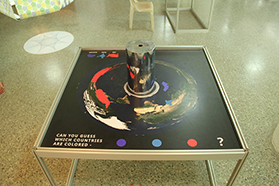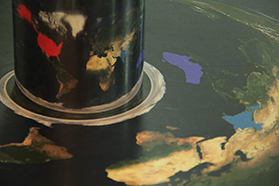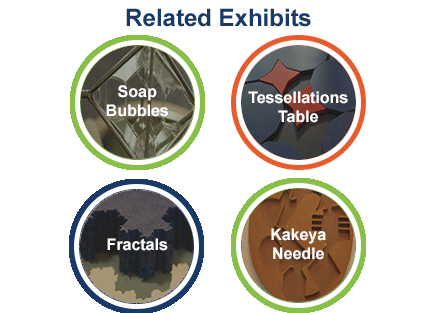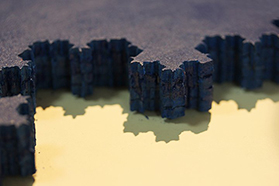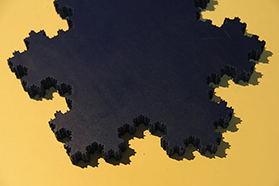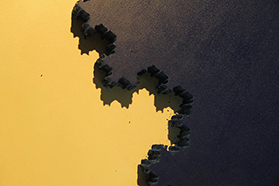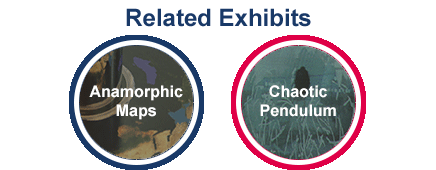
How do cartographers draw maps? What is the math behind the changes in ecosystem? Learn how functions work by walking and more about probability by playing with dice.
We are all familiar with the concept of chance - the idea that something may or may not happen, as opposed to the concept of certainty - that something will certainly happen or will not happen. At first glance, it seems that mathematical ideas are all certain - one plus one is always two, the area of a circle is always πr^2 other times false! So how does one describe the outcome of the throw of a dice or of a coin toss at the beginning of a cricket match? That is the subject of probability theory, and the basis for understanding the two exhibits involving the dice, and the rolling balls in a maze.
The most basic aspect of probability theory is an experiment, and the collection of all possible outcomes of the experiment is called the sample space corresponding to the experiment. Two of the simplest experiments, which form the basis of much of probability theory are: tossing a coin and throwing a die. The corresponding samples spaces are {Head, Tail} and {1, 2, 3, 4, 5, 6}, respectively. One can mix and match these experiments and construct loads of probabilistic games. In the exhibition, two of the exhibits were based precisely on the above basic experiments of tossing of coin and throwing of dice.
Where does such a theory get used? All of us use probability in daily life without ever noticing it - most colloquial statements containing words such as “chance,” “luck,” “fortune,” “random” are invariably statements about probabilities! In particular, we often use laws of large numbers to put forth our observations regarding a typical behaviour. Have you noticed how you use probability? Think about deciding whether to take a rickshaw or just wait for a bus to arrive in time. The decision can be based on calculations that use probability theory. These days, probability theory gets used everywhere from mobile phone networks, to IPL cricket matches, to climate studies.
The notions of uncertainty (even when presented in terms of numbers such as 20% chance of rain) can be easily contrasted with the sense of certainty provided by geometrical objects such as squares, circles, tetrahedra, etc. and by numbers such as even or odd, rational or irrational, real or complex numbers. Some of the exhibits described below, in particular those on fractals, maps, and Fibonacci numbers describe some possibly unusual but interesting aspects of these familiar concepts of geometry and numbers.
The fractals are the kind of geometrical objects that defy the usual notions of length or area and are closely related to some deep properties of numbers and to probabilistic concepts. The distinction between fractal and non-fractals is one of the main highlights of the exhibit on fractals using shapes such as a circle, a snowflake, or the map of Karnataka.
The next exhibit on maps shows the various geometrical concepts that underlie the transforma- tion of the spherical surface of the earth onto a flat piece of paper in order to make maps that we can fold and put in our pockets!
The Fibonacci exhibit shows two of the myriad patterns that occur in the realm of numbers, namely, two sequences consisting of the “usual” Fibonacci numbers and of “generalized” Fibonacci numbers. In general, the notion of sequences is so ubiquitous in mathematics, that it is impossible to over-emphasize its importance. Keeping this in mind, the exhibits on Fibonacci numbers also show the concept of convergence of a sequence.
The last exhibit (borrowed from the museum Mathematikum) asks the visitor to experience the mathematical ideas of a function and its graph by “walking the function” and tracing a curve on the computer screen in the process.
